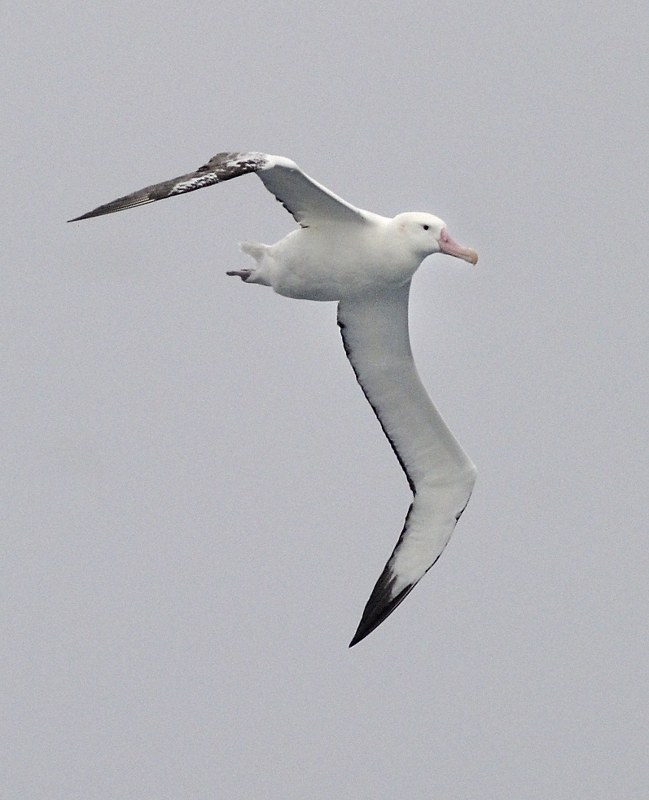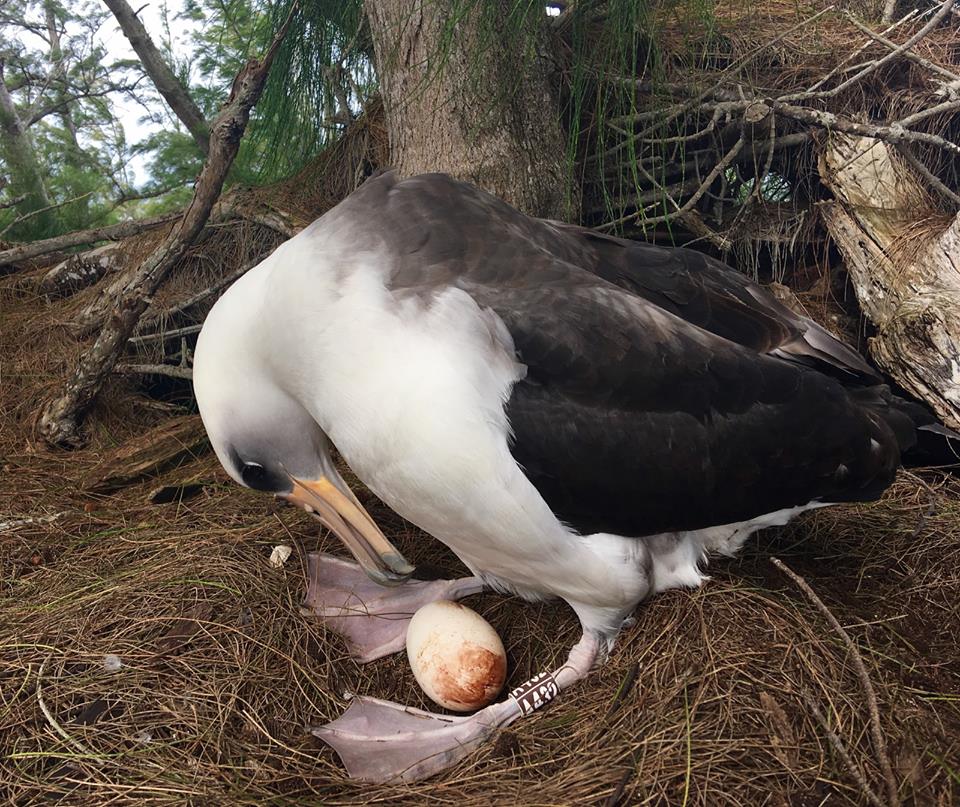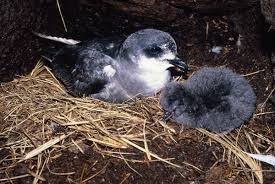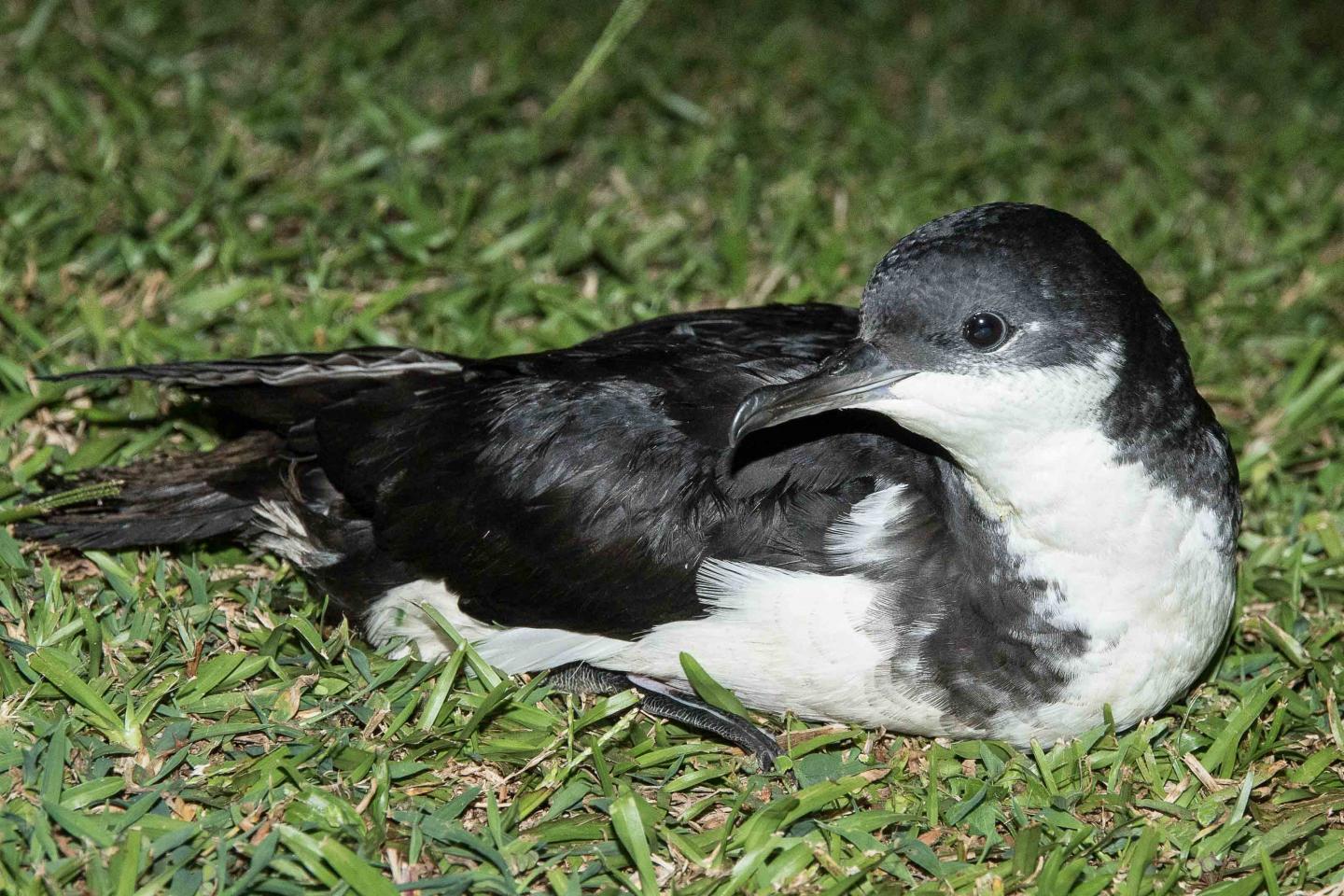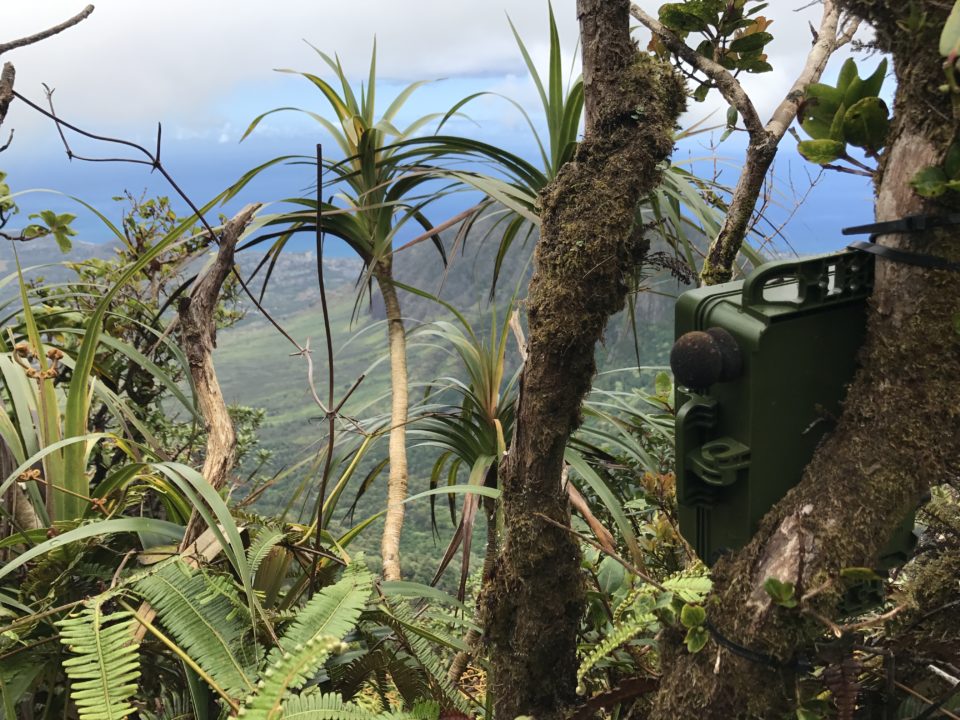“George” and “Geraldine”, a pair of globally Vulnerable Short-tailed Albatrosses Phoebastria albatrus, returned to Sand Island in the USA’s Midway Atoll in the north Pacific in October last year (click here). Since then the pair laid an egg which hatched on 3 January (click here).
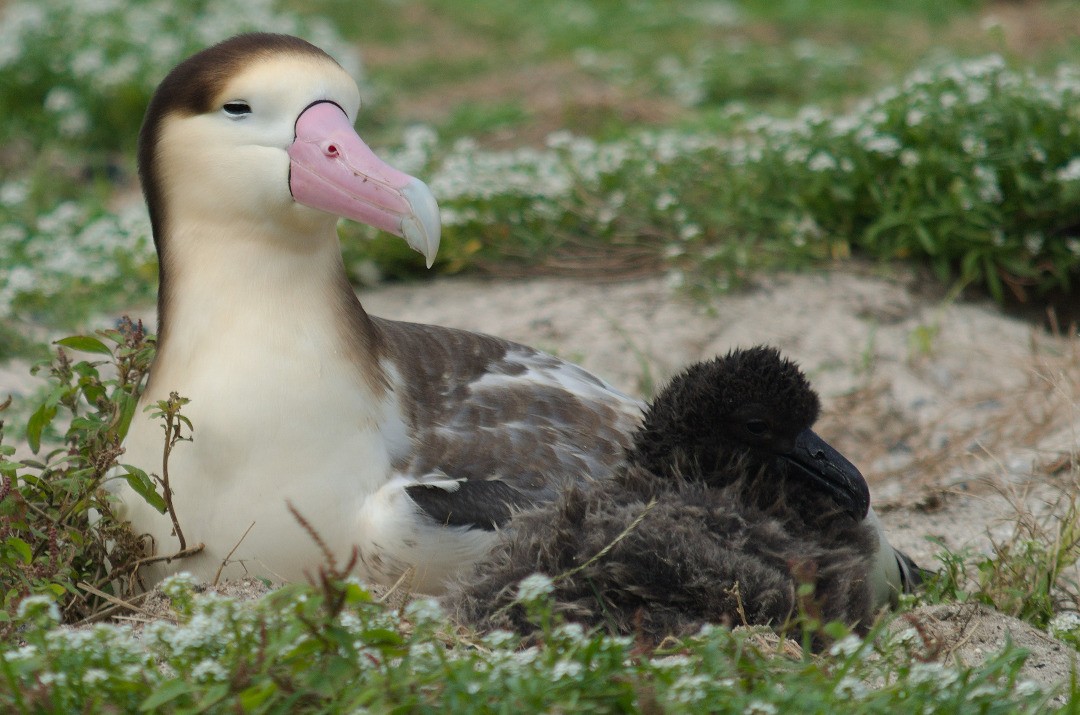
Geraldine the female sub-adult Short-tailed Albatross on Midway Atoll with her downy chick in January 2019; photograph by Zeke Smith
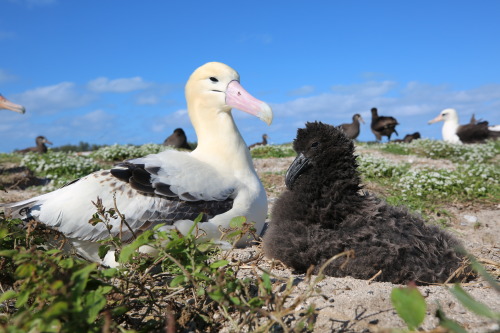
George, male of Midway's Short-tailed Albatross pair, with his growing chick; photograph by Bob Peyton, USFWS
George, the male of the pair, a bird in adult plumage, has been visiting Midway Atoll since November 2006 (when known as “Lonesome George”. He hatched from the colony on Japan’s Torishima in 2003 and was banded there as a chick. Geraldine, an assumed younger bird, is still in sub-adult plumage and is suspected to be an individual that was banded on Torishima in April 2008. She was first observed on Sand Island in early 2012. The two birds were first seen together on the island in late 2016. Last season the pair incubated a Black-footed Albatross P. nigripes egg, which hatched and resulted in a fledged chick. This season they have been doing it properly, hatching their own chick.
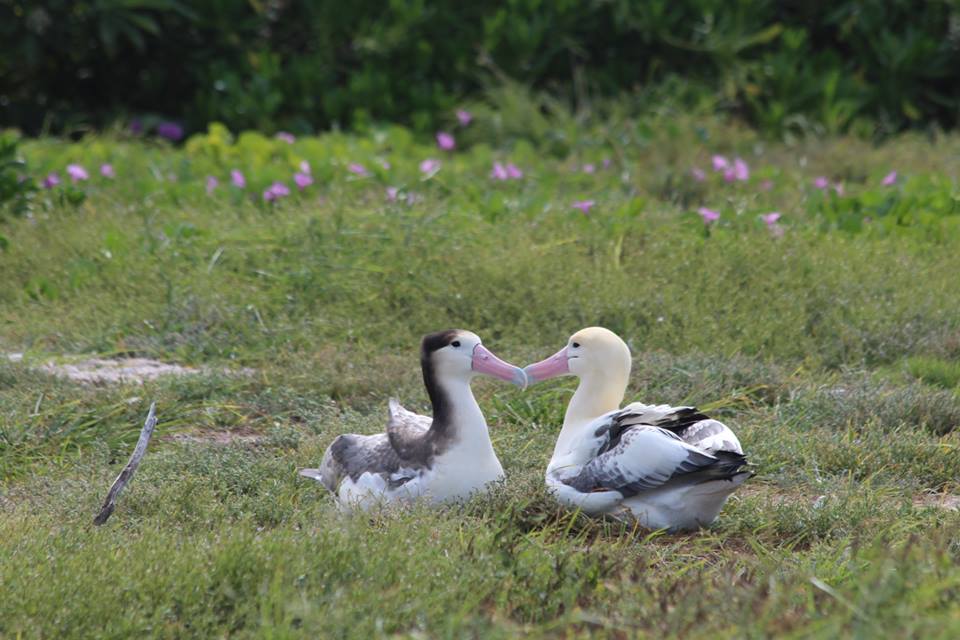
George (on the right) and Geraldine together on Midway in October 2018, photograph by Madalyn Riley, USFWS Volunteer
Previously, a different pair of Short-tailed Albatrosses has bred successfully three times in four years on Midway's Eastern Island within the atoll, fledging several chicks, the last one in 2014 (click here).
Read more about George and Geraldine here and here.
John Cooper, ACAP Information Officer, 06 February 2019, updated 07 February 2019
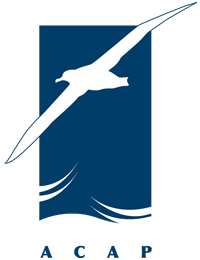
 English
English  Français
Français  Español
Español 